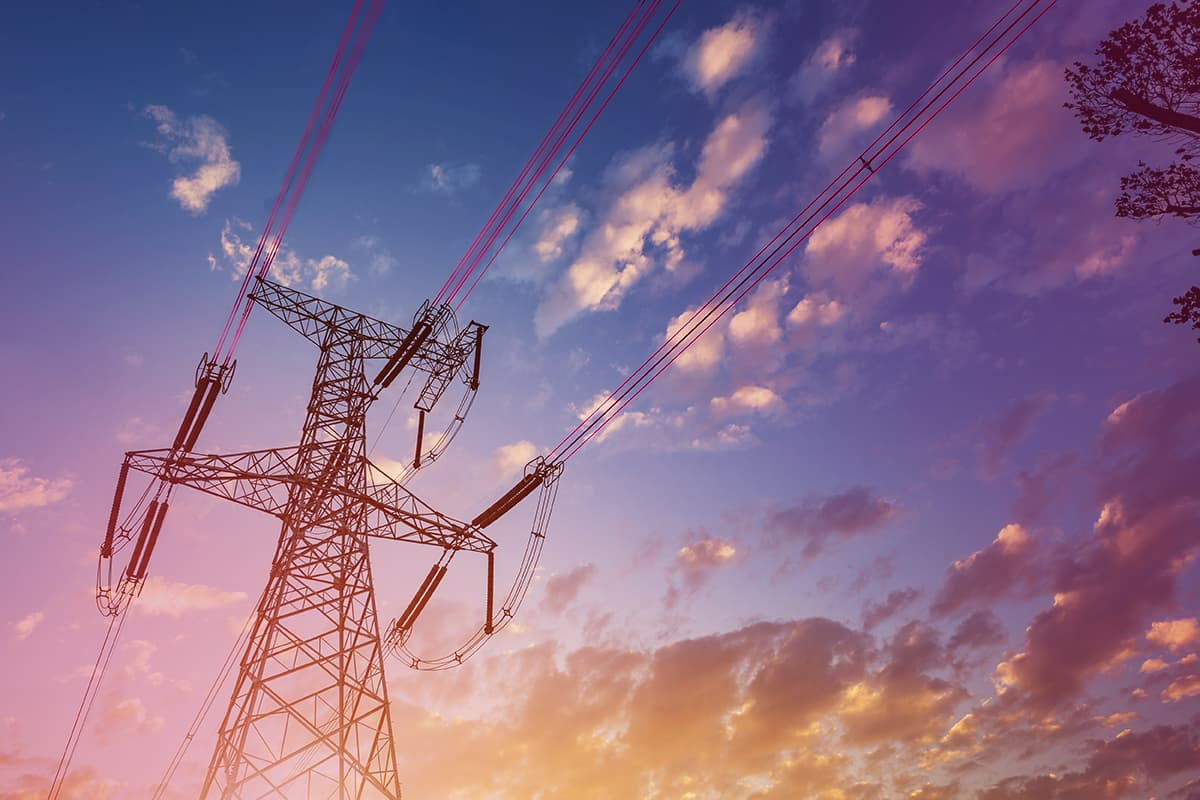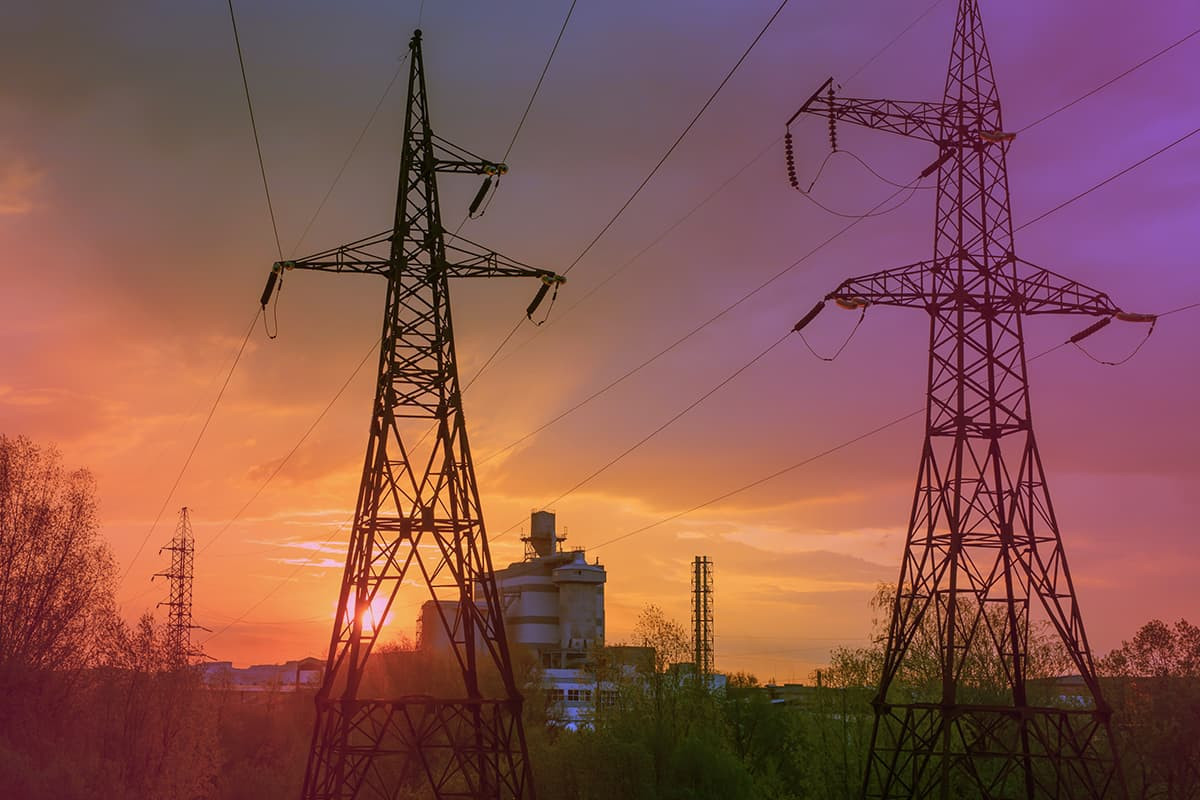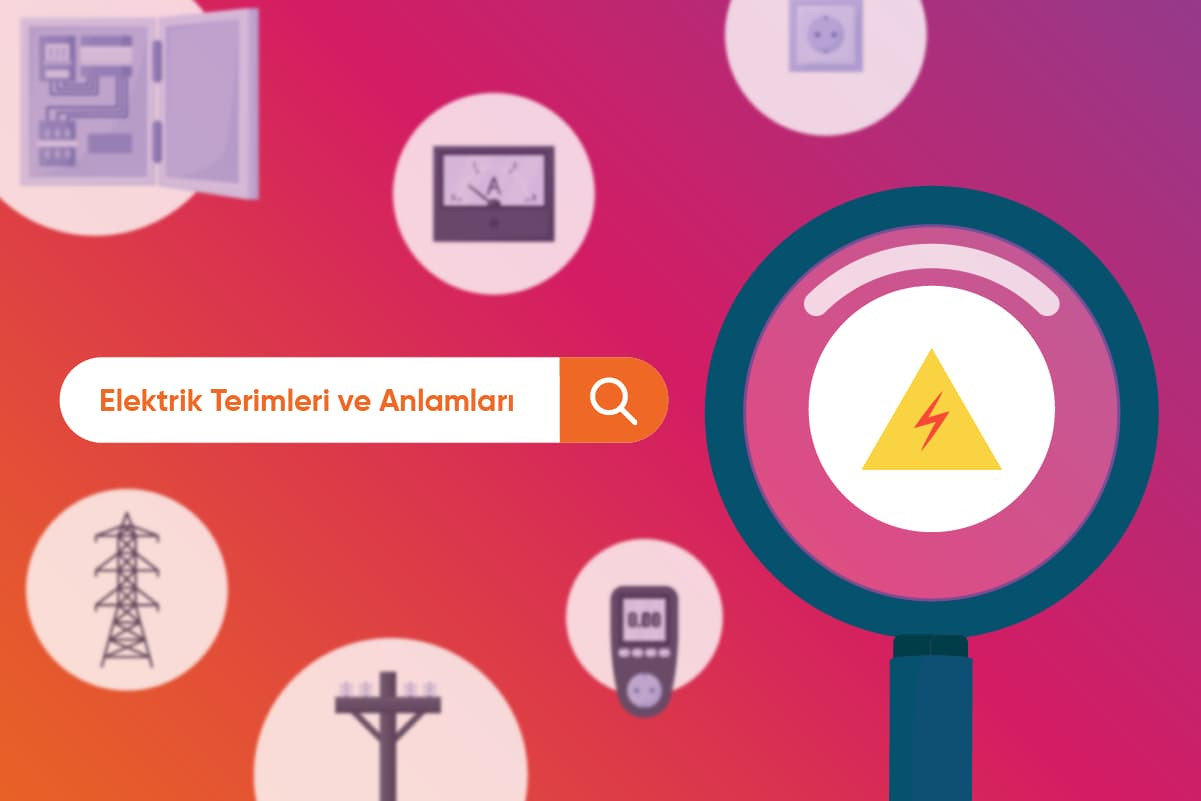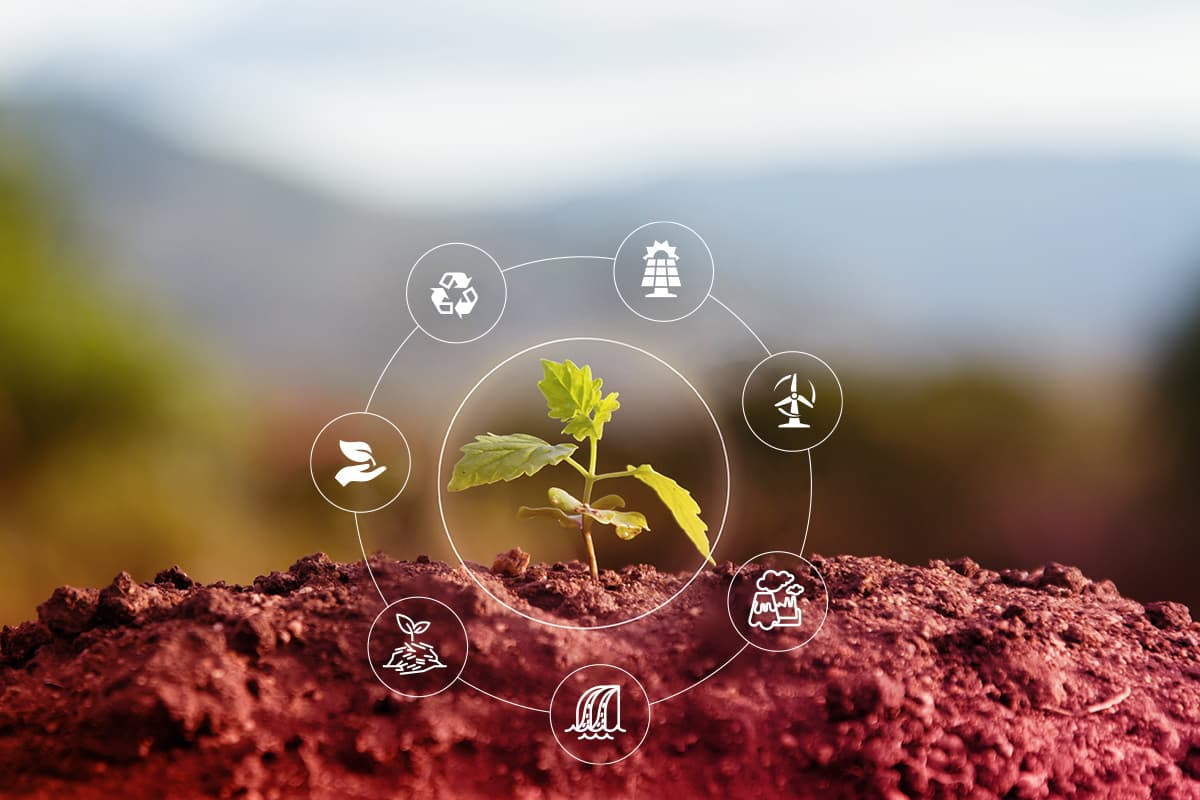
How is Electricity Generated? Different Ways of Electricity Generation
What is in this article?
Electricity, the power source of most devices used today, can be generated from renewable and non-renewable sources.
As an alternative to non-renewable resources such as fossil fuels, which are the most widely used in the world, solar, wind, biomass, or geothermal resources can be used to generate electrical energy.
In this article, you will learn how electrical energy is generated and what resources are used in the generation of electricity.
What is Electricity?
Electricity, the most widely used form of energy, is a secondary form of energy derived from renewable energy sources such as solar power and wind energy, as well as non-renewable energy sources such as oil and coal, which are basic energy sources.
You can find detailed information on this topic in our blog post What is Electricity?.
How is Electrical Energy Generated?
Today, electrical energy is mainly generated in thermal power plants, hydroelectric power plants and nuclear power plants. Although the proportion of non-renewable energy sources in these power plants is high, the use of environmentally friendly renewable energy sources is gradually increasing.
Electric energy generation requires a mechanism to convert chemical or mechanical energy, such as a motor, turbine, or electricity generator. Depending on the energy source, water turbines, internal combustion or gasoline engines, wind turbines, or steam turbines may be used.
Turbines convert the kinetic energy of a liquid or gaseous substance into mechanical energy. A steam turbine has blades on the shaft. Steam power turns these blades to rotate the shaft connected to the generator.
With turbines that use fossil fuels, water is heated and steam is generated using fuels such as coal, oil, and natural gas. Although coal is the most commonly used energy source in Turkey, liquid and gaseous fuels are also used to generate steam today.
In addition to non-renewable resources, renewable geothermal resources are also used to generate steam power. With energy production from geothermal resources, hot water heated underground is used in steam turbines to generate electrical energy.
Water can also be used to turn the turbines. To generate electricity in hydroelectric power plants, water accumulated in a dam is flowed down from a high point. The water is pressurized on the turbine blades and the generator is started. In some systems, rivers or streams, which are natural resources, are used directly instead of dams. Wind turbines, which are similar in structure to wind shafts, convert the energy provided by the wind speed into electrical energy.
In addition to these large-scale turbines and power plants, electricity can also be generated from fruits and vegetables such as lemons and potatoes, or from garbage. To generate energy from potatoes, for example, the potato must be used as a battery in an electrical circuit.
A battery converts chemical energy into electrical energy through an electrochemical reaction. To generate electricity from garbage, methane gas that occurs naturally during the decomposition of waste is used.

Using Renewable Energy Sources to Generate Electricity
The world's ever-increasing population and the scarcity of natural resources bring renewable resources to the forefront for energy and consumption needs. In addition, the fact that traditional energy sources are exhaustible and cause environmental pollution is among the reasons for turning to renewable energy sources. These resources are as follows:
-
Hydroelectric Power
Hydroelectric power which means converting running water into electric energy is one of the most commonly used renewable energies in the world. Turbines are rotated benefitting from the kinetic energy of water accumulated in dams and therefore energy is generated.
As the waster used is given back to its source after the procedure and there is no air pollution during the procedure it is an eco-friendly method.
As there is a continuous flow on rivers this method can produce uninterrupted energy. Operating expenses of hydroelectric power are low and the systems established can be used for long time.
Installed power based on hydroelectric energy increases with each passing day in the world. According to 2021 data by the International Hydroelectric Association (IHA), 16 percent of the electricity in the world is produced using hydroelectric energy which plays an important role in low carbon electric generation.
According to 2022 data by the Turkish Ministry of Energy, the installed power in hydroelectric energy in Turkey is about 31 percent of the total installed power.
-
Solar Power
 Solar power, one of the most widely used renewable energy sources worldwide, meets not only electricity but also heating and cooling system needs. With the decrease in the cost of technological systems and production costs year by year and the increase in incentives, an increase in electricity production from solar power is expected.
Solar power, one of the most widely used renewable energy sources worldwide, meets not only electricity but also heating and cooling system needs. With the decrease in the cost of technological systems and production costs year by year and the increase in incentives, an increase in electricity production from solar power is expected.
The regions with the highest solar power potential in Turkey are the Mediterranean Region with an average annual sunshine duration of 2,965 hours and the Southeastern Anatolia Region with an average annual sunshine duration of 2,993 hours. However, it is possible to utilize solar power in electricity generation, except for the Black Sea Region, which has less annual sunshine compared to other regions.
Studies show that the solar power resource of our country is 376 TW, which is approximately 500 times the installed power. Investments are currently being made to convert this power into energy.
The region with the highest sunshine duration in the world is the city of Yuma within the borders of the United States of America, with 4,000 hours of sunshine per year.
Europe, North America and Asia have the highest installed power potential, respectively. China, the United States, Germany, Italy and Japan are countries with a high capacity of photovoltaic installations.
-
Wind Energy
Wind energy, which is characterized by its wide area of application, has great importance in meeting the demand for electricity. This source of energy is environmentally friendly as it does not consume natural resources and does not cause carbon emissions. In order to meet the electricity demand, wind turbines are installed in suitable regions depending on the wind strength.
In Turkey, electricity is generated by using onshore and offshore wind energy. The Wind Energy Atlas of Turkey, published annually, identifies areas where wind turbines can be installed.
The payback period of investments and the utilization of wind energy capacity in the respective region are the most important criteria when evaluating this energy source.
In 2021, 9.4% of Turkey's electricity generation was covered by wind energy. Globally, Denmark covers on average half of its total electricity generation from wind energy. Countries such as Germany, Portugal, Italy, and Ireland also use wind energy, while India and the United Kingdom stand out with their high potential.
The United States and China, which play an important role in the generation and distribution of wind energy, consume only a small portion of the electricity generated domestically.
-
Geothermal Energy
 Geothermal energy, an environmentally friendly and clean energy source, has the advantage of not being affected by weather and climate conditions.
Geothermal energy, an environmentally friendly and clean energy source, has the advantage of not being affected by weather and climate conditions.
Wells in areas with geothermal potential contain fluids, i.e. liquids and gases that circulate in the rock. After these fluids are separated into water and steam, they are converted into electrical energy with the help of generators and turbines.
Turkey, which is located in the Alpine-Himalayan belt, is one of the countries with a high geothermal energy potential. There are about 1000 hot water springs in our country. Western Anatolia, in particular, is one of the regions with the greatest potential thanks to these resources.
Indonesia, the United States, New Zealand and the Philippines are the countries with the highest geothermal energy potential in the world. Research by the International Energy Agency shows that by 2050, 3.5% of the world's electricity needs will be met by geothermal energy.
-
Energy from Biomass
 Every living thing has a certain amount of electron-absorbing capacity, and thus living things contain energy in their bodies. Energy from biomass: Generation of kinetic energy by utilizing the potential energy contained in carbohydrate-containing animal and plant products and waste.
Every living thing has a certain amount of electron-absorbing capacity, and thus living things contain energy in their bodies. Energy from biomass: Generation of kinetic energy by utilizing the potential energy contained in carbohydrate-containing animal and plant products and waste.
Many products such as oilseeds, vegetable wastes, forest wastes, and animal feces are used for energy production. Most of these resources are used for heating purposes in our country.
Only a part of forestry waste is used for the production of electric energy by airless decomposition. With this method, microorganisms living in an oxygen-free environment ferment organic matter, producing fertilizer, methane and carbon dioxide. The resulting methane can be used to generate electricity.
Energy from biomass is usually obtained by burning biomass in high-pressure boilers. The high-pressure steam produced by this process drives the turbines and generator.
Some experimental methods are also used. For example, since the electrical energy obtained from plants cannot be stored with batteries, capacitors can be used in these systems. The capacitor allows the storage of electric charge by polarizing electrons.
The reason for using capacitors is that the voltage value at which the batteries are activated is smaller than the incoming energy. However, capacitors can store as much as their capacity regardless of the amount of incoming current.
Multiple capacitors can be connected together by connecting them in series.
This supplies energy with higher voltage values to the circuit. When connected in parallel, the transfer occurs at a higher amperage than normal. When more than one capacitor is connected to a system, the volts and amps increase.
-
Tidal Energy
 The movements of the moon cause seawater to rise and fall due to gravity. The rising water is collected in a basin and used to generate electrical energy.
The movements of the moon cause seawater to rise and fall due to gravity. The rising water is collected in a basin and used to generate electrical energy.
Calculations show that tidal movements in the oceans have an average daily energy capacity of 3000 TWh.
However, 60 TWh, or about 2 percent of this energy, can be harnessed by converting it into electrical energy.
Regions with the highest tidal energy potential in the world include the Philippines, Japan, China, and Indonesia, as well as the European continent. France and Canada also have important tidal processing facilities.
Generation of Electricity from Non-Renewable Sources
Approximately 70% of the electrical energy consumed in Turkey is generated from non-renewable energy sources. Thermal resources in the form of solids, liquids, or gases provide electricity with the released heat.
In thermal power plants, the combustion of raw materials such as coal, petroleum, and natural gas boils the water in the boilers and produces steam. The resulting steam drives the turbines to generate electricity.
Oil, coal, biogas and natural gas are the most commonly used energy sources. In addition, there are also sources such as nuclear energy, which are not actively used in Turkey, but are valid in the world.
-
Coal
Coal is the most commonly used energy source in Turkey and in the world. According to the Energy Outlook Report, 9,723 terawatt-hours of the total 25,551 terawatt-hours of energy produced in the world in 2017 were derived from coal.
In Turkey, the most commonly used solid fuel for electricity generation is lignite. It is black or brown in color and has a calorific value of 1000-5000 kcal/kg. It is found in regions such as Sinop, Beypazarı and Soma.
-
Oil and Derivatives
Petroleum and petroleum derivatives are used in thermal power plants to generate electricity. Most of the gasoline used in Turkey is imported from abroad.

-
Natural Gas
Natural gas is a combustible gas of organic origin with a very high methane content. It is preferred because it has a calorific value between 8500-10000 kcal/kg.
Although natural gas is generally used to generate heat, it is also used in thermal power plants to generate electricity.
-
Nuclear Energy
Nuclear energy is generated by the heat given off by the atomic nucleus during its controlled decay. Plutonium, uranium, and thorium are some of the most commonly used radioactive elements. In nuclear power plants, the heat released from these sources is used to convert water in boilers to steam, as with other fossil fuels, to generate electrical power.
There is no nuclear power plant in Turkey, but Turkey's thorium reserves are equivalent to 54% of the thorium found worldwide.
How is Electric Current Generated?
Electric current is the movement of electrically charged parts or electric charge in a certain direction. In short, it is the electric charge that flows through a conductive object per unit time.
In order for the current to flow, electricity must be supplied to the object. When it is done, electrons begin to move from the negative (-) to the positive (+) direction.
Generating Electrical Energy with a Generator
 Generators are mechanisms that convert electrical energy into mechanical energy.
Generators are mechanisms that convert electrical energy into mechanical energy.
In any magnetic field, electric current is generated by the movement of conducting materials. Generators also have stagnant conductive materials. Inside these static conductive materials is a magnet. The ring-shaped conductive material is wrapped with wire.
Rotation of the magnet produces an electric current at each point on the wire wrapping the ring.
These small currents combine to create a much larger current. Electrical energy is also generated by these currents.
Which type of renewable energy do you think is better suited for use in Turkey? You can leave your answers in the comments.

 Online Services
Online Services Application Inquiry
Application Inquiry Pay Assurance Fee
Pay Assurance Fee Query Installation Number
Query Installation Number Compensation Fee Inquiry
Compensation Fee Inquiry Automatic Payment Order Inquiry
Automatic Payment Order Inquiry Partnership
Partnership




Leave a Comment